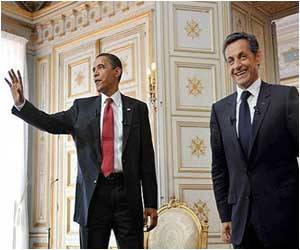In spite of the severe economic crisis, rich countries have contributed billions of dollars, euros and yen to the developing world, according to a recent study.

After climbing 13 percent annually from 2004 through 2008, growth in health-related aid averaged six percent over the next two years, following the near meltdown of the US financial system, the study found.
"Everyone in the global health community is worried about how the economic crisis is going to affect giving," said IMHE director and lead author Christopher Murray.
"We were surprised to see sustained growth through 2010," he said, noting that the 2009 and 2010 figures are preliminary estimates.
Total giving in 2010 is likely to reach a record 27 billion dollars (21 billion euros), fourfold the level in 1990.
A further drop-off, however, may be around the corner when multi-year commitments by donor countries expire, he warned.
Advertisement
Governments and private sources have stepped up donations, while funds from strapped non-governmental organisations (NGOs) dropped by 24 percent from 2009 to 2010.
Advertisement
At the same time, the study uncovered imbalances in how money was distributed.
Spending from all sources on HIV/AIDS topped six billion dollars in 2008, the last year for which a breakdown by disease is available, taking nearly as large a slice of the donor pie as all other health problems combined, the report showed.
Around 1.8 million people died from AIDS-related causes in 2009, according to the World Health Organisation (WHO).
Development assistance in 2008 for tuberculosis and malaria -- which claimed 1.7 and 1.0 million lives last year -- was 1.19 billion and 830 million dollars, respectively.
Funding for maternal, newborn and child health was half that allotted for HIV/AIDS, though birth-related problems account for more than three million deaths per year.
There was also a poor match between need and funding for some of the world's poorest nations, especially in Africa.
And while the goal of boosting basic health care infrastructure has been widely embraced, dedicated funding has not materialised, the study found.
"It is hard for donor country governments to be accountable to their parliaments about where the money is spent" if it is not earmarked for a specific disease or problem, Murray said by email.
"Also, even if the rhetoric is there, lots of people remain deeply sceptical that it is an effective way to fund programs," he added.
An earlier study by IMHE, published in The Lancet, showed that funding over the last two decades has shifted substantially from public to private channels.
In 1990, UN agencies and development aid banks accounted for more than half of assistance dollars for health. By 2007, that share had dropped to 21 percent.
Source-AFP










